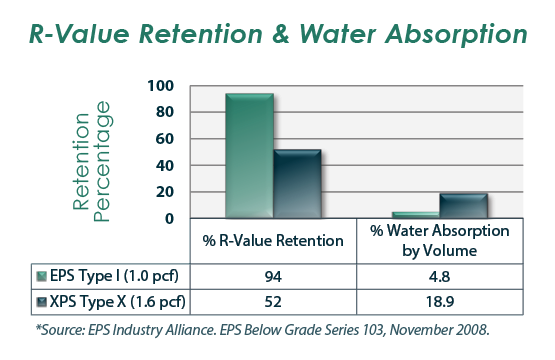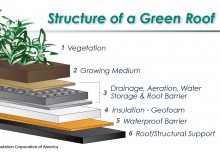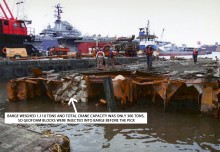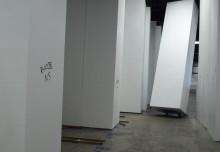It has been a mighty cold February and a perfect time to pick the topic of insulation for this month’s blog. Last month we discussed the benefits of using expanded polystyrene (EPS) insulation for roofing; however, to get your home or business thermally sound, it starts below grade level.
In today’s market, consumers and builders are demanding homes to be built energy and resource-efficient. Is it possible to get the best performing material, save on initial costs and benefit from long-term savings in one product?
If you choose EPS the answer is YES!
So why EPS versus XPS (extruded polystyrene) and what are the differences? First, let’s talk about what EPS is and isn’t.
What exactly is EPS? Although it is commonly referred to as Styrofoam™, that label is incorrect—EPS is not Styrofoam. Styrofoam is a Dow trade name that is an extruded polystyrene (XPS) product and actually blue in color. EPS is a lightweight, closed-cell, rigid white bead board. This cost-effective product has long-lasting thermal insulation properties and is also moisture resistant, reducing the risk of mold and mildew, making it an ideal choice for below-grade insulation. It is available in several compressive strengths to withstand load and backfill forces. The marketing forces behind the extruded products gained them a significant market share in the construction industry. However, independent 3rd party studies have proven that EPS outperforms and outlasts its extruded counterpart.
In below-grade applications, water and moisture must be considered. According to a 15-year In-Situ study¹, XPS showed water absorption by volume 18.9% while EPS only 4.8%. Water absorption affects the overall performance of the material which affects the overall R-Value. This study showed that EPS retained 94% of its R-Value while XPS retained only 52%.
Below-grade applications are typically not part of remodeling or improvement. Once the structure is constructed, the foundation does not change, so making the correct insulating choices at the beginning of a project is most critical to obtaining long-lasting thermal performance for the lifetime of the structure.
Is it possible to get a better-performing product and still have initial cost savings? Again the answer is Y-E-S with EPS.
Products that have been proven to outperform the competition generally cost more. We all are familiar with the “you get what you pay for” motto. However, specifying EPS for your next below-grade or frost-protected shallow foundations (FPSFs) project can save you 20% – 50% in initial costs and benefits the home or business owner with lower long-term heating and cooling costs. The range in savings will depend upon the compressive strength that is being specified. EPS is used for many insulating applications. For applications that need custom sizes and densities, EPS is available in various compressive strengths (densities) and can be economically custom cut to the thickness needed for the application. This is an additional labor-saving advantage that is not included in the 20%-50% initial cost savings.
Construction methods are adapting to the evolving changes in building codes and the consumers’ demand to build with energy efficiency. Due to the cost-effectiveness and the proven performance of EPS, the industry has gained great momentum in the below-grade foundation and insulation markets.
So when it comes to your next insulation decision, neglect the perception that if you want the best you must pay more. Consider this instead: less is more.
It is simple—EPS costs less than XPS and performs better, with long-term true R-Value. Isn’t this what you want for your home or business?
Isn’t it time to say Y-E-S to EPS?
To specify ICA-LITE® EPS for your next project, contact us at sales@insulationcorp.com
Learn more about FPSFs
• • • • • • • • • • • • • • • • • • • • • • • • • • • • • • • • • • • • • • • • • • • • • • • • • • • • • • • • • • • • • • • • • • • • • •
1. 15-Year In-Situ Research Shows EPS Outperforms XPS in R-Value Retention. EPS Industry Alliance. EPS Below Grade Series 103, November 2008.
This article was posted on February 20, 2014, by Insulation Corporation of America (ICA) – a Women-Owned manufacturer of Geofoam and Expanded Polystyrene (EPS), which is commonly but mistakenly referred to as Styrofoam™. ICA is located in Allentown, PA and services the entire Mid-Atlantic Region from Virginia to Maine to Ohio.








